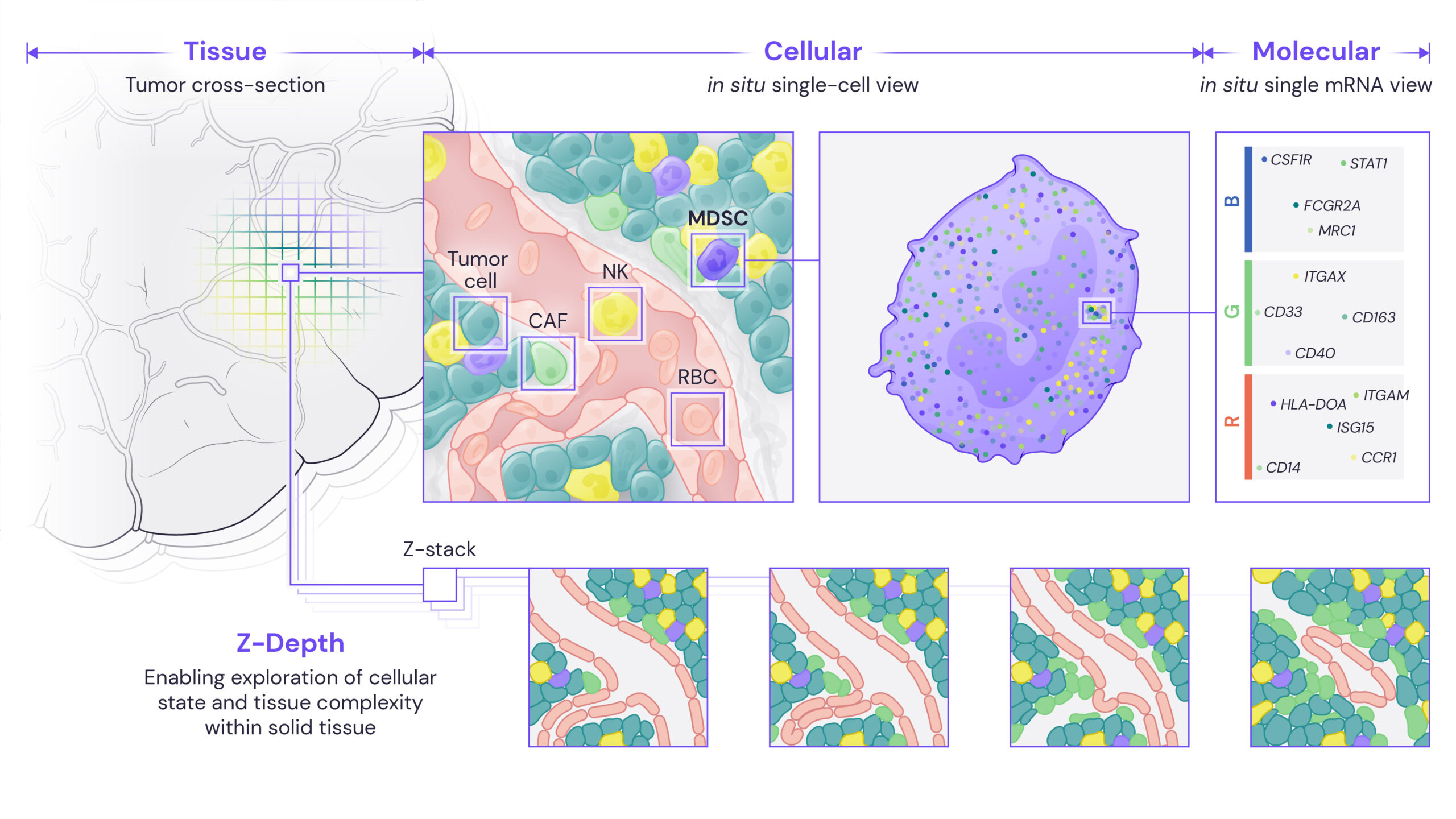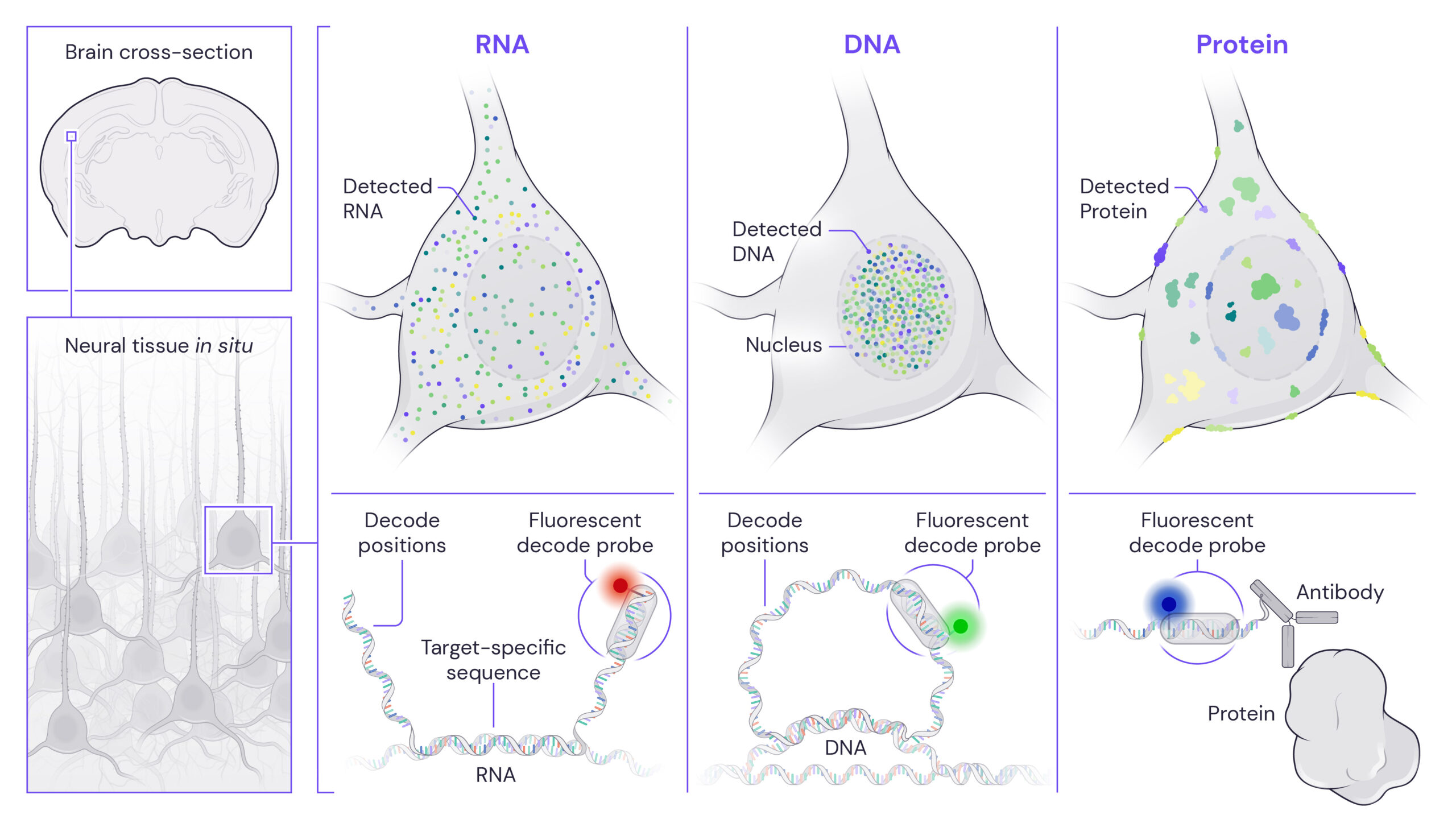
Spatial Genomics identifies molecules and cells in context
GenePS identifies and locates individual biomolecules to define distinct cell types and locations. This highly multiplexed analysis can be accomplished directly within the tissue microenvironment. The applications of seqFISH span the breadth of biological discovery, including neuroscience, developmental biology, oncology, immunology, and more.
What you can discover with seqFISH
GenePS, using seqFISH, allows researchers to identify novel cell types, map genomic organization and nuclear architecture, and analyze cell trajectories. seqFISH provides additional unique insights beyond other common applications of multi-omics:
- mRNA and proteins are visualized directly within the cell making the subcellular localization of transcripts and proteins readily apparent.
- seqFISH identifies neighboring ligand-receptor pairs to understand cell-cell communication and signaling.
- By enabling trajectory analysis on cells within intact tissue, seqFISH will revolutionize the understanding of how tissue microenvironments directly impact cell state changes and developmental trajectories.

Areas of Research and Discovery
Neuroscience
Spatial single-cell multi-omics in the brain can help determine brain cell functions and the detailed spatial organization of neurons and glia.
Developmental biology
seqFISH provides key multi-omic insights while preserving cellular morphology, informs detailed maps of tissue architecture, and enables trajectory analysis of stem cells, progenitors, and differentiated cell types throughout all stages of development.
Oncology
Many aspects of tumor biology benefit from being studied with spatial context preserved, such as tumor heterogeneity, the presence or evasion of infiltrating immune cells, and the tumor microenvironment.
Immunology
The immune response and inflammation take place within tissues and organs. Understanding healthy and diseased states is bolstered by knowing how the immune system develops and becomes resident within diverse organs, surveils tissues, and communicates in order to fight infections.
Combine approaches for direct multi-omic analysis
Flexibly combine Spatial Genomics’ technologies for a multi-omic approach:
- RNA seqFISH for transcriptomics
- DNA seqFISH for genomic organization and nuclear architecture
- Sequential immunofluorescence for proteomics

